Sample tools and Apps
Ant Media Server provides a range of sample applications to showcase its ability across different use-cases. Explore and interact with these samples to see Ant Media Server in action.
The default applications in Enterprise Edition are LiveApp and WebRTCAppEE and in Community Edition are LiveApp and WebRTCApp. Note that those are just application names and naming scheme doesn't denote or mean anything, hence both sample applications have exactly the same features.
1. WebRTC video publishing
Ant Media Server can ingest WebRTC video from web browsers. After installing the software and an SSL certificate, you can publish video using webRTC from this file:
/usr/local/antmedia/webapps/LiveApp/index.html
at this URL
https://domain-name.com:5443/LiveApp/index.html
For installation, please check out quick start installation guide.
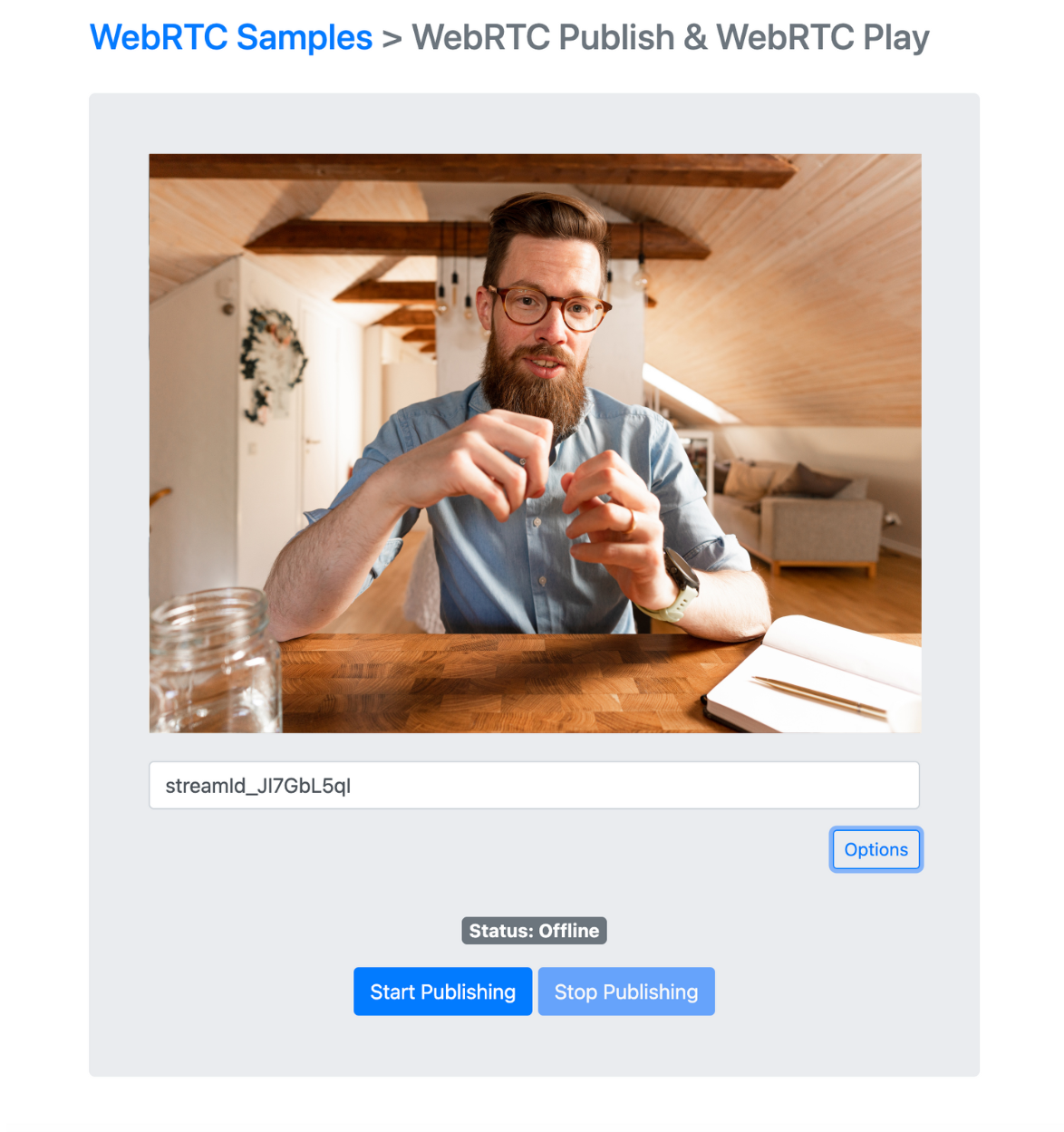
Publishing WebRTC video without an SSL installed
If you are running the server on the localhost, there won't be a problem. However, for security reasons web browsers do not allow reaching out to media devices without an SSL certificate.
for development purposes, in order to bypass that in Chrome web browser, you can add your server's IP address to the following Chrome property and it will not ask for SSL.
chrome://flags/#unsafely-treat-insecure-origin-as-secure
2. WebRTC video playing
You can play the live streams published to the server with a WebRTC video player. WebRTC video playback is available in Enterprise Edition.
You can navigate to the following URL to playback your webRTC stream.
https://domain-name.com:5443/LiveApp/player.html
File is located at /usr/local/antmedia/webapps/LiveApp/player.html

3. WebRTC audio publishing
WebRTC Audio publishing is available in Enterprise Edition using the following sample page:
https://domain-name.com:5443/LiveApp/audio_publish.html
The file is located at /usr/local/antmedia/webapps/LiveApp/audio_publish.html
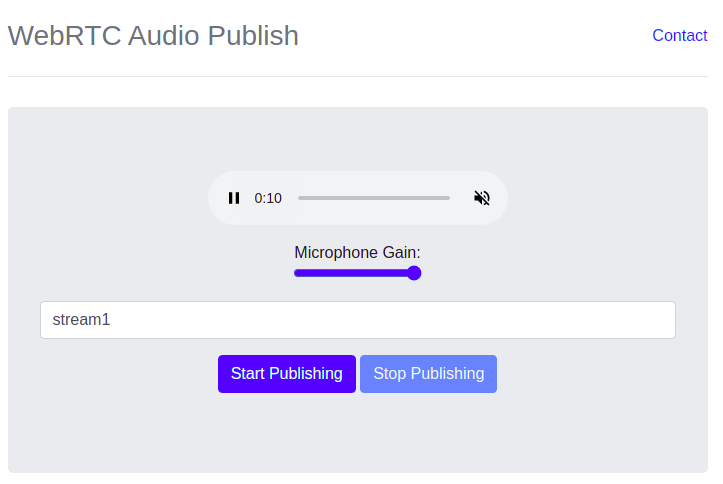
4. WebRTC audio playing
WebRTC Audio playing is available in Enterprise Edition using the file is located at /usr/local/antmedia/webapps/LiveApp/audio_player.html
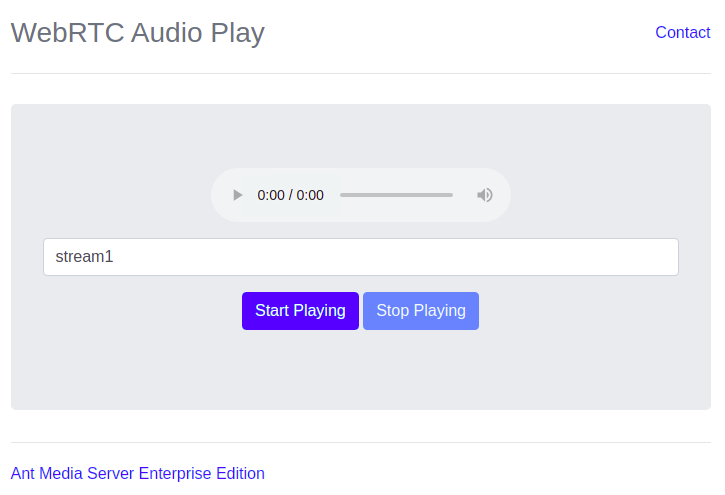
5. Conference calls
WebRTC Conference is available in Enterprise Edition. This feature allows one or more publishers to send video streams to a group of audiences. Latency in the conference is around 0.5 seconds.
File is located at /usr/local/antmedia/webapps/LiveApp/conference.html.
For technical and detailed information about conference alls, please follow the link.
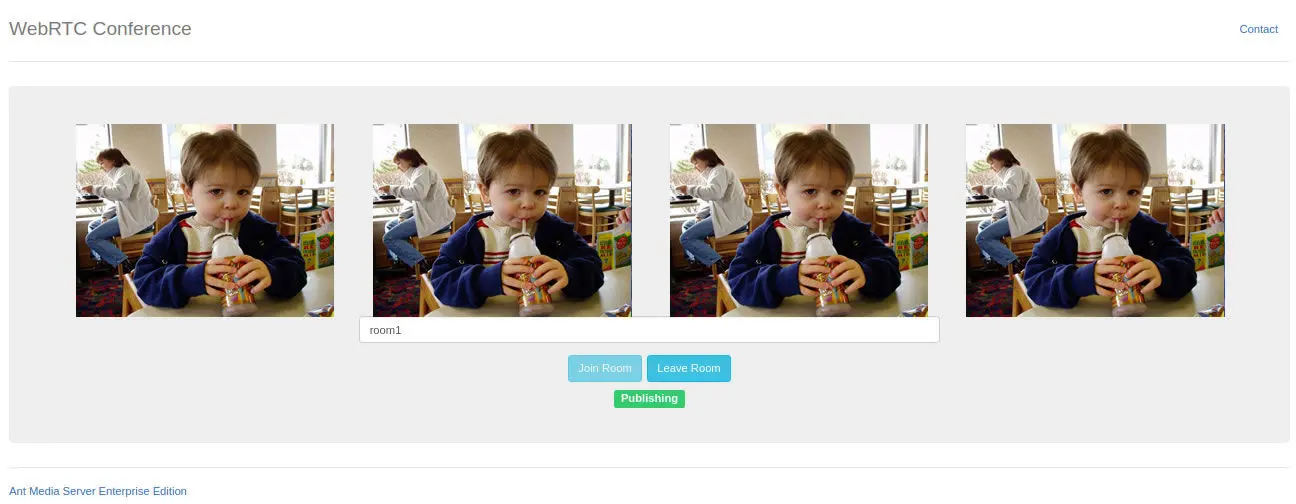
6. Peer to peer live streaming
WebRTC live streaming (peer to peer) is also available in Enterprise Edition.
https://domain-name.com:5443/LiveApp/peer.html
File is located at /usr/local/antmedia/webapps/LiveApp/peer.html
If you would like to dive in further regarding the technology behind live streaming, you can also analyze the WebRTC video/audio publish example. For technical details, please follow the link.
7. WebRTC multitrack player
WebRTC Multitrack Player is available in Enterprise Edition.
File is located at /usr/local/antmedia/webapps/LiveApp/multitrackplayer.html
8. WebRTC multipeer player
WebRTC Multitrack Player is available in Enterprise Edition.
File is located at /usr/local/antmedia/webapps/LiveApp/multipeerplay.html
9. Live publishing with whiteboard
You can broadcast live streams to Ant Media Server with a whiteboard, where the whiteboard is synchronized with all players. Please make sure that data channel is enabled on the server side as it's disabled by default. WebRTC whiteboard publisher is available in Enterprise Edition.
File is located at /usr/local/antmedia/webapps/LiveApp/canvas-publish.html
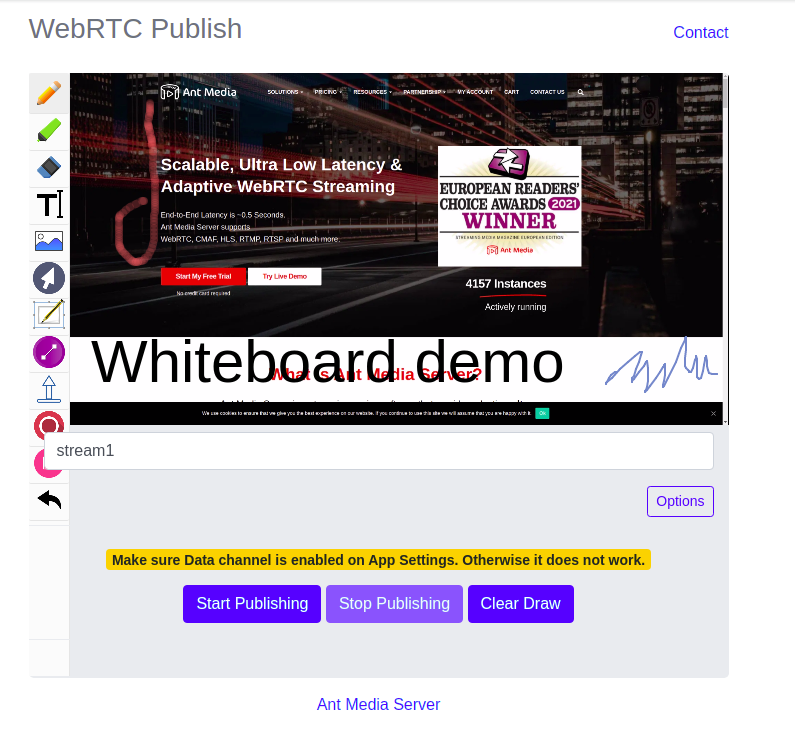
10. Live playing with whiteboard
You can play live streams with a synchronized whiteboard. Please make sure that data channel is enabled on the server side as it's disabled by default. WebRTC whiteboard player is available in Enterprise Edition.
https://domain-name.com:5443/LiveApp/canvas-player.html
File is located at /usr/local/antmedia/webapps/LiveApp/canvas-player.html
11. WebRTC DataChannel
You can send only data through WebRTC via Ant Media Server without video or audio. It works the same way with WebRTC Publish and Play which means all data is delivered to subscribers. WebRTC DataChannel is available in Enterprise Edition.
File is located at /usr/local/antmedia/webapps/LiveApp/datachannel.html
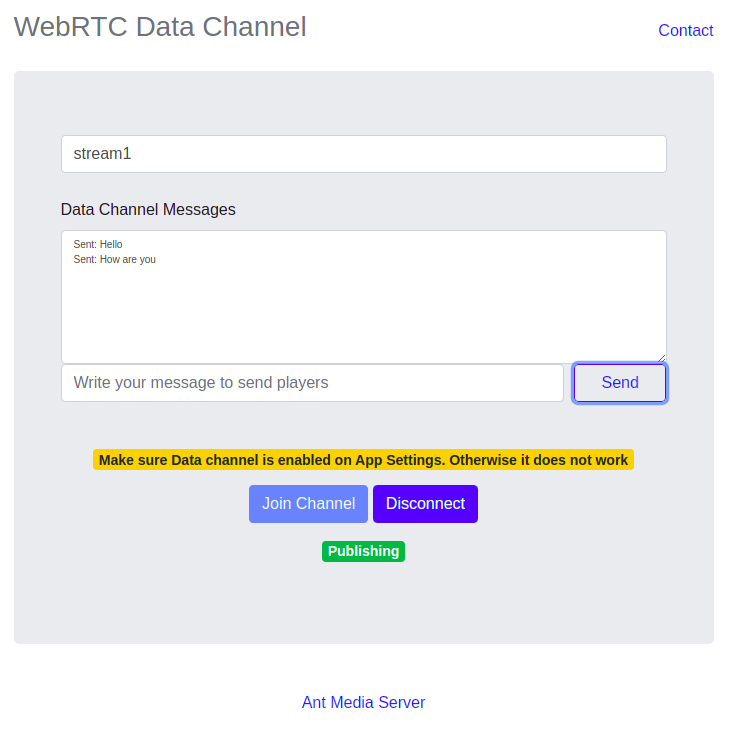
12. Live streaming test tool
With this tool, you can measure E2E (End to end) bitrate, RTT, packet lost and other connection parameters that may affect the quality of the stream with test tool automatically. Live streaming test tool is available in Enterprise Edition.
File is located at /usr/local/antmedia/webapps/LiveApp/webrtc-test-tool.html.
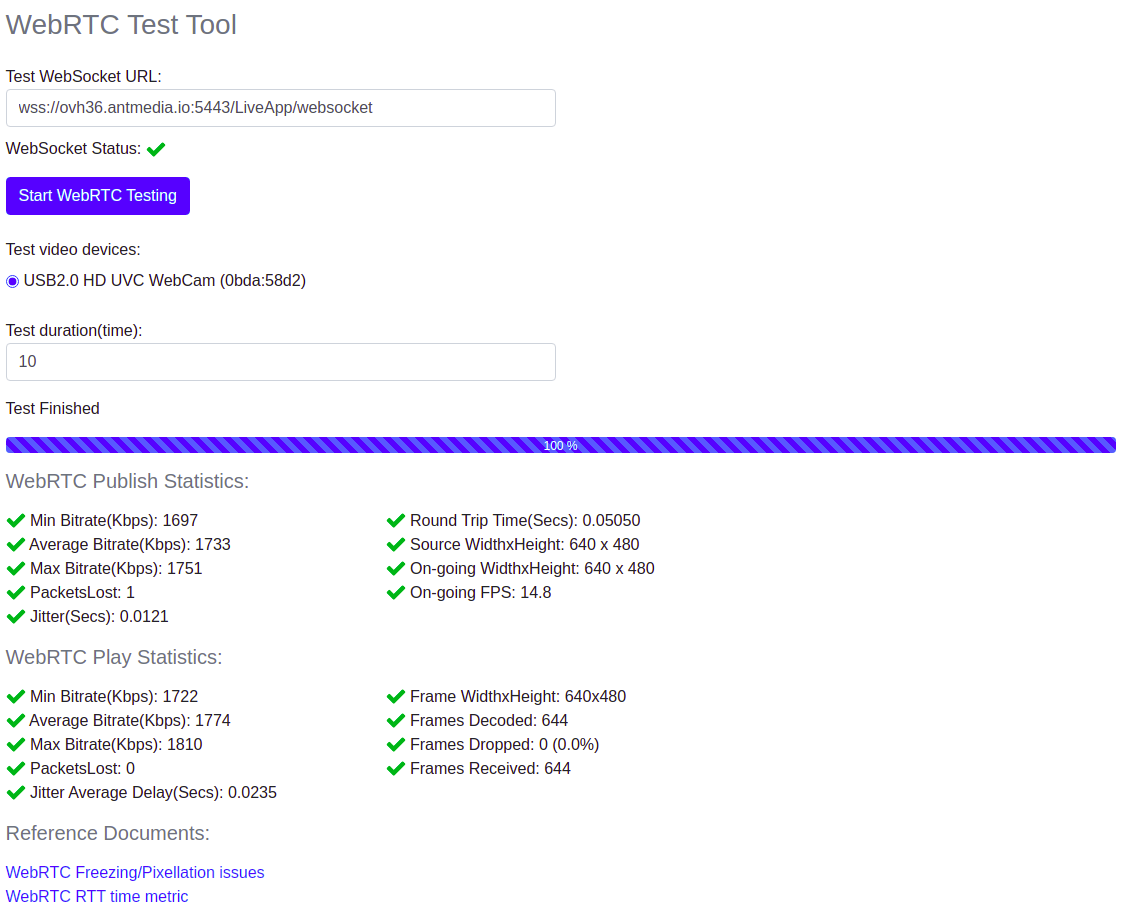
13. Live streaming with timestamp
You can broadcast WebRTC camera stream by drawing current timestamp of the frame. It's used for measuring the E2E (End to End) latency. Live streaming with timestamp feature is available in Enterprise Edition.
https://domain-name.com:5443/LiveApp/publish_with_timestamp.html
File is located at `/usr/local/antmedia/webapps/LiveApp/publish_with_timestamp.html
14. WebRTC Player With Timestamp
You can broadcast WebRTC camera stream by drawing current timestamp of the frame. It's used for measuring the E2E(End to End) latency. It has a built in function to send the frames to either Amazon Recognition or Google Vision API to get the latency measurement. For technical details, please read e2e latency measurement documentation. WebRTC Player with Timestamp is available in Enterprise Edition
File is located at `/usr/local/antmedia/webapps/LiveApp/player_with_timestamp.html
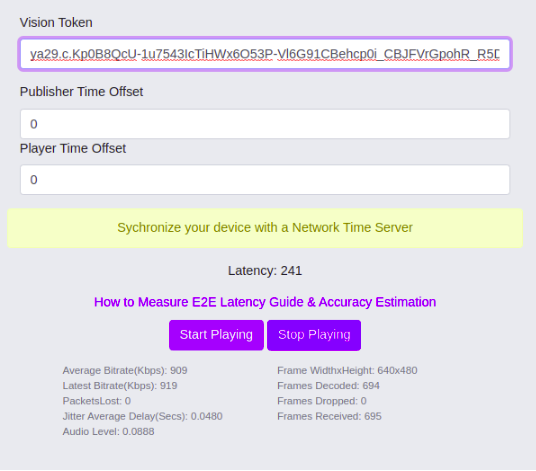
15. WebRTC stream merger
You can connect a conference room, get all streams & merge them into a canvas & republish to Ant Media Server. This solution is useful if you want to publish conference room to large number of audience in a single stream. Please check this blogpost for more information for details. WebRTC stream merger is available in Enterprise Edition.
File is located at /usr/local/antmedia/webapps/LiveApp/merge_streams.html